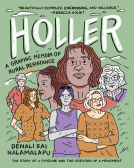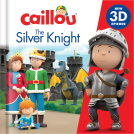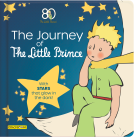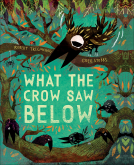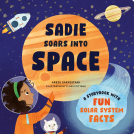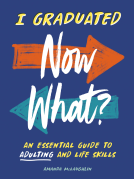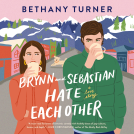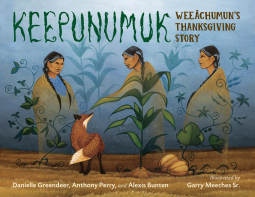
Keepunumuk
Weeâchumun's Thanksgiving Story
by Danielle Greendeer; Anthony Perry; Alexis Bunten
This title was previously available on NetGalley and is now archived.
Send NetGalley books directly to your Kindle or Kindle app
1
To read on a Kindle or Kindle app, please add kindle@netgalley.com as an approved email address to receive files in your Amazon account. Click here for step-by-step instructions.
2
Also find your Kindle email address within your Amazon account, and enter it here.
Pub Date Aug 02 2022 | Archive Date Aug 02 2022
Talking about this book? Use #Keepunumuk #NetGalley. More hashtag tips!
Description
A beautiful new classic perfect for fall. Written and illustrated by four Indigenous creators, this picture book for 3-7-year-olds is about the first Thanksgiving from a Native American perspective—reshaping the story and perhaps questioning how the United States sees itself.
The Thanksgiving story that most Americans know celebrates the Pilgrims. But without members of the Wampanoag tribe who already lived on the land, the Pilgrims would never have made it through their first winter. And without Weeâchumun (corn), the Native people wouldn't have helped.
Written by Danielle Greendeer (Mashpee Wampanoag), Anthony Perry (Chickasaw), Alexis Bunten (Unangan/Yup’ik) and beautifully illustrated by Garry Meeches Sr. (Anishinaabe), Keepunumuk is an important picture book honoring both the history and tradition that surrounds the story of the first Thanksgiving.
Available Editions
| EDITION | Other Format |
| ISBN | 9781623542900 |
| PRICE | $17.99 (USD) |
| PAGES | 32 |
Featured Reviews
 JANE M, Educator
JANE M, Educator
In today's world in which we have come to recognize that it is important to hear the voice of all the players in an event, I was excited to see that this story, Keepunumuk (KEE puh-nuh-muk: Weeâchumun's (we-AH-chuh-mun) Thanksgiving Story was written by someone from the Wampanoag tribe (a tribe that was living in the area when the pilgrims arrived) and the Chickasaw tribe. It was illustrated in the style of the Eastern Woodlands tradition. It was written in the storytelling tradition and uses many words from the Wampanoag language. There is a glossary which tells how to pronounce the words and what they mean. The pictures and the style of writing draws you in to the heart of the story. You come to realize the desperate situation the newcomers are in and the ways that the land and First People helped them to survive.
This is one of the most difficult reviews I have ever written. There were things I loved about the book yet others that caused me concern. It is an informative retelling of the Native Americans spiritual connection to the land, its crops and animals. It compassionately takes the reader through the story of our Thanksgiving, a day that many Native Americans call a day of mourning. Fortunately and unfortunately there is no explanation as to why it is known as a day of mourning. While the intended audience is pre school through 2nd grade I believe it is best shared with an older audience, one able to begin processing why it was/is a day of mourning for Native Americans. To do this more information needs to be available to understand what went wrong . If shared with a younger audience the giving nature of the First People and their spiritual connection to the land should be emphasized. The last pages of the book offer information about the Wampanoag Tribes, the storytelling tradition, the Wampanoag Harvest Feasts, the Wampanoag Tradition of Giving Thanks and a recipe.
Beautifully illustrated, this Wampanoag telling of the first Thanksgiving is a welcome perspective. Readers listen along as Grandmother tells the story to two children, and shows them how the Three Sisters (corn, beans, and squash) and the First People (native, Wapanoag) helped the newcomers (colonizers) despite their troubling ways. The story focuses on the First People and the Three Sisters, while acknowledging that there is an alternative story that the children might have heard. Helpful glossary and pronunciation guide.
Glad to see that both authors and the illustrator are Native Americans.
Danielle Greendeer (Mashpee Wampanoag) and team tell this story of the First Thanksgiving through a Wampanoag perspective. The book integrates Wampanoag words and uses a Wampanoag storytelling format. This book does such a great job at flipping the story's perspective and providing an introduction to why this day isn't celebrated by some, but it's done in a way that's still sensitive to young readers. Kudos to the authors for this book!
 Educator 936602
Educator 936602
I lovely story of giving and supporting one another. It's an alternative narrative which shares how listening the earth and those who inhabit it are truly one. We are all here for one another and if one is struggling the other helps out.
Thank you to the publisher and NetGalley for this ARC in exchange for an honest review!
Keepunumuk by Danielle Greendeer; Anthony Perry; Alexis Bunten is an educational children's book that tells the true story of Thanksgiving. According to the description, the story revolves around "two kids from the Mashpee Wampanoag tribe (who) learn the story of Weeâchumun (corn) and the first Thanksgiving." Unlike the traditional Thanksgiving story, where the Pilgrims are heroes, the Wampanoag tribe is centered here.
Overall, Keepunumuk is a wonderful children's book that centers Native Americans. Personally, I think it's so important to read books written by Native Americans about Native Americans. Native peoples have faced so much at the hands of colonizers, and I think it's so important for their truth to come out. One highlight of this book are the information pages at the end of the book. I can this book being used in classrooms all over, and I think it should be taught every Thanksgiving. If you're intrigued by the description, or if you're looking for Native American texts for children, I highly recommend that you check out this book when it comes out in August!
 Sophie J, Reviewer
Sophie J, Reviewer
"Many Americans call it a day of Thanksgiving. Many of our people call it a day of mourning."
Keepunumuk is a children's story about Thanksgiving told from the perspective of the Weeachumun's perspective. N8hkumuh (Grandmother) tells the story of their ancestors to her grandchildren and the first harvest involving the pilgrims.
Through breathtaking illustrations an important part of history is brought back to life. This book can educate not only children but also adults of the First Peoples and Thanksgiving. The book also involves an introduction, glossary and a recipe. I would highly recommend this be introduced by teachers to their curriculum for young children.
This is a wonderful children's book that depicts the first Thanksgiving, otherwise known as Keepunumuk from the Indigenous perspective. It is informative but was not too graphic for younger audiences. The art style was unique, looking like paintings on canvas. Overall I enjoyed this book.
The early American settlers called it Thanksgiving, which is now owned as American Thanksgiving. However, the First Peoples (Native Americans) have a different spin on that first event of shared thankfulness. They knew it as Keepunumuk. This great children's story from the First Peoples' perspective is cosily told by N8hkumuhs (Grandmother) telling the story to her young grandchildren Maple and Quill. In the telling the reader will learn what is meant by "The Three Sisters" and their importance to the Wampanoag..
It is a good thing there is a pronunciation key at the outset of the story of the Wampanoag language terms used in the story. Also of interest, at the end, is some background information of the Wampanoag tribes, their traditions and harvest feasts. There is even a recipe sampling of their food and one gets to meet the actual Maple and Quill. Combined, along with the excellent colorful illustrations, makes this a wonderfully educational experience. The only cautionary measure I'd interject is against the encouragement given to impressionable children to give thanks to the tribal groups' guardian spirits and to elements of creation instead of to the Creator, Himself. In this, parental guidance may be needed. Other than this, I have no qualms about this book and believe it to be a refreshing look at the roots of the yearly festival.
~Eunice C., Reviewer/Blogger~
February 2022
Disclaimer: This is my honest opinion based on the complimentary review copy sent by NetGalley and the publisher.
<img src="https://www.netgalley.com/badge/04b37ae7f3ff846e213a00a515d0a1f507bf1833" width="80" height="80" alt="Reviews Published" title="Reviews Published"/>
<img src="https://www.netgalley.com/badge/95bfbb51bd15b75713b08162cd37354affcfcc50" width="80" height="80" alt="50 Book Reviews" title="50 Book Reviews"/>
 Educator 901668
Educator 901668
Keepunumuk is a Wampanaog telling of the first thanksgiving. The story, told in Wampanaog tradition, shows how the First Peoples helped settlers avoid starvation during their first winter on First Peoples' land.
This story is beautifully told, and beautifully illustrated. Prior to the telling of the story, information about the Wampanaog, including a language guide, is provided. The information provided is presented clearly, in an easy-to-digest format, and helps those who are not familiar with Wampanaog language and tradition immerse themselves in the story.
The story itself is simultaneously rich and heartbreaking. The story hints at the tragic events that the First Peoples faced (and continue to face) as a result of colonization. However, this story shows that First Peoples are still here and that their voices are still strong.
Thank you to NetGalley and Charlesbridge for the ARC of this book.
A big thank-you to NetGalley, the author, and publisher for giving me a copy of this book for an unbiased review.
4/5 - Really liked it.
I'm really glad to see more children's and YA books that deal with the true history of the United States. Keepunumuk is a fantastic book for many reasons - the story retells the tradition of Thanksgiving but does so from a First People perspective, in the style of a First Nation myth. The narrative does not shy away from using words from the Wampanoag language, which both preserves the language for children of that nationality and also allows children from other groups to better grasp that there are real people who were impacted by the legacy of colonialism. The narrative also brings up the fact that Thanksgiving is a day of great mourning for many Native Americans - which is an important fact.
Overall, I think this would be a great book to add to children's libraries worldwide and I am deeply appreciative of the fact that it was written and illustrated by Native Americans.
This is an awesome alternative children's book for Thanksgiving, and I can't wait to stock it in the store I work at during the holidays. I will say, though, to echo another reviewer, that the way the Pilgrims were depicted as neutral, or even nice/positive, was...a choice. I get that this is for young kids, but I do think that this book's very subtle hints at future violence weren't quite enough.
This book tells the story of Thanksgiving from an Indigenous perspective. It teaches the story of how Indigenous peoples sacrificed their own food supply to teach the newcomers how to survive on the land. A few of the things I loved about this book was how it touched on different parts of the culture such as the creator speaking to them in their dreams, and how the seeds were speaking to the newcomers but they couldn’t hear them. I also loved how in the beginning it provided the meaning and pronunciation of the Indigenous words that were used. This book would be a great resource for teachers during thanksgiving time, or when discussing Indigenous issues. The authors provide in the end even a traditional recipe that could be made.
Keepunumuk provides a glimpse into the original history of Thanksgiving sharing Wampanoag outlook on the event. The story begins on a beautiful day during harvest season. Maple and Quill are picking what to eat for lunch while chatting with their grandmother. Their conversation takes turn and they end up discussing the very first thanksgiving ever to be celebrated. The Wampanoag tribe otherwise known as People of the First Light were the first to live in modern day Massachusetts and have lived there for more than 12,000 years before the pilgrims colonized their land. Prior to the English settlers' arrival, an epidemic of unknown disease ravaged the Native American population. They were in a weakened condition from the grief of losing loved ones and the process of rebuilding their community. Watching the pilgrims struggle to survive on a foreign land with little knowledge, the native people extended their support after initial hesitation, taught them how to hunt and plant crops, what to fish for and saved them from dying out of hunger. An alliance was formed with belief that it would be beneficial for both parties. in Autumn of 1621 they had a bumper crop and celebrated the good news arranging a grand feast for three days. But the aftermath of their union was disastrous. The native people suffered terribly at the hands of the pilgrims. Many of them died, others were imprisoned and enslaved. It's a pity that only a few people know the truth behind the celebration. As a person who live faraway from America and had no idea why in the world people need thanksgiving day to thank parents, I am shocked beyond belief. The writers have done a tremendous job hinting at the dark past in an understandable and child friendly way. I love that they have included Wôpanâak words and concepts in the story staying true to the roots. There is a glossary at the very beginning defining the words. So no worries. The illustrations by Garry Meeches are gorgeous, exquisite and vividly portrays the scenes. I hope they will further continue this project as a means to preserve other Wampanoag stories in danger of disappearing. It would be a great delight to read them. Sending my gratitude to Netgalley and the authors for providing me an ARC in exchange of an honest review.
A sweet story of the first thanksgiving told from the eyes of first nation peoples.
Lovely illustrations depicting how nature and mother earth impact our everyday lives and survival
This is a really strong picture book with excellent storytelling and earthy tones illustrations that support understanding for littles. This is a Thanksgiving story that we need, perfect for preschool and kindergarten, as we teach students “whose voice is being heard?” and to hear multiple perspectives. I love the way the end of the book includes recipes and other supports for delving into Wampanoag culture.
Keepunumuk is the name and story of the first harvest meal shared between the Native Americans and European settlers.
It tells how the plants and animals watched the struggle of the settlers and decided they should sent the Native people to help.
The extras showing where the tribes lived on a map we recognize, the meaning of words, and some history are all very nice bonuses.
This book offers another way to tell the traditional Thanksgiving story from a Native perspective.
 Librarian 656164
Librarian 656164
This is a fantastic take on the Thanksgiving story from the side that we generally don't hear about. I love the honesty of it; the story isn't unfair or unrealistically portrayed. The art is also fantastic! If you're teaching the OG Thanksgiving story, you have to have this book and share it with kids and students.
 theresa h, Educator
theresa h, Educator
Keepunumuk: Weeâchumun's Thanksgiving Story
by Danielle Greendeer
Looking at the historical story from the native perspective. It is amazing how it looks at the cultural differences and history. Its another point of view. I hope that it helps students to understand more of the original story.
This is a fantastic book! A much needed perspective of thanksgiving that doesn’t center on or turn a blind eye to colonization. As an indigenous person, I was excited that the story retained a lot of the elements of oral storytelling and that “native” language and concepts were used in the book. A must have for any library collection and a great addition to personal collections as well.
 Kindred A, Librarian
Kindred A, Librarian
Beautifully written. I enjoyed reading a different perspective than what we are usually taught in schools and it was so refreshing! Definitely will be looking to add to our collection
 Educator 823459
Educator 823459
This book was a great starting point for discussing colonization from the Indigenous perspective and provides great information surrounding how the Indigenous people saw their land. It provides Indigenous words and specifies the nation in which the story takes place. This book is beautifully pictured and written. can be used for any age group - not just the younger children. Though this story slightly differs from the Indigenous people of Canada, I would still use this in a classroom and perhaps plan an activity for comparing and contrasting the differences we see in this book to what the Canadian Indigenous people went through.
 Becky B, Educator
Becky B, Educator
A beautifully illustrated picture book depicting the first Thanksgiving through traditional story telling. The author’s use of the First Peoples’ perspective is appreciated and leaves plenty of room for open discussion.
 JC S, Educator
JC S, Educator
This is story about the celebration of Thanksgiving and its origins. It is fascinating and important to learn that from the perspective of Native Americans it isn’t always considered a celebration. There is plenty here to stimulate discussions with children. The illustrations are beautiful and the story is engaging. I would have liked to hear more about the reasons for some calling it a day of mourning. The wopanaak words, the tribe map and the recipe were great additions. Thank you to the authors, NetGalley and Charlesbridge for an ARC in exchange for an honest review.
In America, the story of the first Thanksgiving is drilled into our heads from childhood, so it is great that this book takes the view of the native people, the Weeachumun, the People of the First Light, who were living there first.
Without their help, the people known as the Pilgrims would have all died of starvation. This book celebrates how the people and the plants and the animals came together to help these people, and thus give them food to celebrate with.
Beautiful retelling, though sad at the same time.
<em>Thanks to Netgalley for making this book available for an honest review.</em>
 Shauna M, Reviewer
Shauna M, Reviewer
This was a beautiful story about the "First Thanksgiving" or Keepunumuk (the time of harvest) told from a First Peoples perspective. I had heard about the three sisters before this book in another book written by an Indigenous author; there is so much we can learn about working harmoniously with the land from Indigenous communities.
I thought the story was told beautifully and I enjoyed learning about Weeachumun through this Wampanoag story.
 Esther Q, Librarian
Esther Q, Librarian
A must have for your library. Keepunumuk is a story of the first Thanksgiving told from a Native American perspective. Wampanoag words and storytelling format are used. A language guide is provided. This book also includes some information about Wampanoag tribes, language, and includes a recipe. The illustrations are beautiful.
In my opinion, this story is a good introduction to history. It is written in a way that is sensitive to young kids and can be used as a conversation starter.
 Jo C, Reviewer
Jo C, Reviewer
The written version of one of the stories Wampanoag Tribes told their children, about the newcomers who came to America and learn new tradition of Thanksgiving introduced by the tribe. The Indian tribe has this wonderful story of the three sisters: corn, beans and squash, that they cultivate and consume since the beginning. And this tradition was passed on the newcomers to survive the land. Interesting story, moreover for us who lived far from the Indians, to learn more about them and their history.
A good history from the perspective of the Natives. It is usually a combined history, of both pilgrims and natives. It was refreshing to hear this side of it. The pictures were beautiful and inspiring. It will be a great book to have on the shelf for my kiddos!
Loved it! I am always looking for books to recommend at Thanksgiving that represent a First People's perspective on the holiday and this definitely fills that need. It is educational and informative of the First People's culture and lifestyle during this time period. Contains maps, end notes, and even a recipe that expand on the book's content.
It's my first time to encounter the Thanksgiving story as it should be told to kids: from the Native American perspective. This is such an important book, and it deserves all the love, support, attention, and SALES previously given to other Thanksgiving tales centering the colonizers' perspectives.
NetGalley provided this arc and book club kit in exchange for an honest review.
This non-traditional thanksgiving story is just what the doctor ordered. I have been looking for children's books to include in my collection. I am working on a complete overhaul of our children's sections. I am adding books that tell a more accurate account of what has transpired in the past. Keepunumuk tells of how the Native Americans helped save the pilgrims who invaded their land. This book was well-received by my children. I cannot wait for this book to be available for purchase. I will do read-alouds for my youngest patrons during our programming time.
Thanksgiving is a holiday that many of us can remember celebrating in school by making paper Pilgrim hats or eating pumpkin pie, turkey, and dressing in the cafeteria. In recent years teachers have begun to search for more information about the First Peoples and their role in helping the colonists survive until that first harvest. Author Danielle Greendeer is a citizen of the Mashpee Wampanoag Tribe and tells the story in the Wampanoag tradition, incorporating the Three Sisters of Corn, Beans, and Squash (shown on the cover with the forms of plants and humans). The story weaves in the figures of Ousamequin (Massasoit) and Tisquantum (Squanto), explaining how Tisquantum was sent to teach the colonists how to nurture the Three Sisters.
The acrylic illustrations show the animals and plants of the Wampanoag tribal lands, the traditional dress worn by the First Peoples at that time, as well as the colonists in their English clothing. The narrative is framed within the conversation of a grandmother sharing the story with her grandchildren of that first Keepunumuk (harvest time) that the colonists and First Peoples held together. Rather than having a glossary in the back of the book, important words from the Wopanaak language are defined at the beginning. There is also a brief introduction to explain who the Wampanoag are and why the term First Peoples is used.
This is a welcome addition to the narrative that children are already acquainted with, bringing the perspective of the other half of the group present at that first celebration that some call Thanksgiving, but reminding us that it also has other names and traditions associated with it.
I read an advance copy provided by the publisher for review purposes. It is scheduled for publication on August 2, in plenty of time for use during holiday lessons this fall.
 Christina D, Bookseller
Christina D, Bookseller
Finally, a Thanksgiving story from the perspective of the 'First Peoples.' This is the book every collection needs to contain. The illustrations alone are stunning and provide a beautiful accompaniment to this story. This own voices book is a treasure, and can be shared with the youngest of readers.
 Elizabeth S, Educator
Elizabeth S, Educator
Keepunumuk was a wonderful story not often told in schools. Getting the Wampanoag side of the story was refreshing. The glossary of terms was helpful and the photo at the back helps students to understand that the Wampanoag people are not just people in a history book. I wish the story had been longer.
Incredible First Nations retelling of the first Thanksgiving...the first of its kind for young readers. It is beautiful and an absolute MUST share with all children.
 Jan T, Reviewer
Jan T, Reviewer
This story is about the sharing and kindness of those who were well experienced in living on this side of the ocean towards those arriving from far away.
This multicultural view of an event that is recorded in the oral tradition by a people who did not use a written language at that time is for sharing and reading WITH children of all ages and the wordings are good for ESL as well. The names of things in Wampanoag are not any harder to pronounce than words in many Asian or Eastern European (or Finnish!) languages.
The illustrations by Garry Meeches Sr., are clear, brilliantly colored and executed, and visually informative.
Every public and school library needs a copy as well as the usual gifting!
I requested and received a free temporary e-book on Adobe Digital Editions from Charlesbridge via NetGalley. Thank you!
 Fernanda M, Reviewer
Fernanda M, Reviewer
As someone from another country, this story is not very familiar to me. But I liked the way it showed nature and the tribe. The afterword with more information about their traditions, the map, and even the recipe was very interesting. The art is beautiful!
Impressive!
Stunning!
Dreamy perfect!
Thank you, Charlesbridge, for the advance reading copy.
This book is a gem! I absolutely love the way of how this important story is being portrayed. A Wampanoag story told in a Native tradition. The kids are learning about corn and Thanksgiving from the Mashpee Wampanoag tribe adults.
An eye opener as well as an amazing story everyone should read.
The pages are eye-popping and the presentation is so good.
Beautifully illustrated, this is the perfect book to introduce children of all ages [and adults as well] to the real story of the first Thanksgiving and why it is important to know the truth of that time and why it is still so important to fight for the First People's rights.
Told in a frank, but simple way [highlighting the First People's belief's in the elements, food and ancestor spirits and that they live among them and guide them daily - this is actually some of the coolest parts of the story], with a pronunciation guide at the beginning of the story [and highlighting why it is still so important for the First People's to keep their language and for the rest of us to use it properly] and a summary of what the story means at the end [and why the authors are telling this story in this form], this book is a must-read. It is so well done and I am beyond grateful to have gotten a chance to read this. It is absolutely a book I will be revisiting.
Thank you to NetGalley, Danielle Greendeer, Anthony Perry, Alexis C. Bunten, Garry Meeches - Illustrator and Charlesbridge for providing this ARC in exchange for an honest review.
 Michaela D, Reviewer
Michaela D, Reviewer
This book tells the true story of Thanksgiving, not from the first European settler´s opinion, but from the First Peoples, here the Wampanaog and Chickasaw. Their people helped the settlers plant corn, beans and squash to survive. This story is told by a Grandma to two of her grandchildren and shows another perspective to this traditional holiday. Sadly it´s in the end called a day of mourning, very probably because of the wrong done to the First Peoples. The explanation of words in their language and a glossary are interesting for young children to read with their parents or for older pupils. The illustrations are amazing, also capturing a tradition of the style of the Woodlands.
Thanks to the publisher and Netgalley for an arc ebook in exchange for an honest review.
We loved this book! Beautiful illustrations and a beautiful story. Highly recommend for all children.
The story of Thanksgiving not told enough. This book goes a long way towards filling in some of the gaps of American history - particularly the role that the Wampanoag tribe played. Too much history has been centering white folks for too long, and I'm grateful for a story that starts to right those wrongs.
Keepunumuk is a lovely addition to the Thanksgiving story. The artwork is beautiful, the story engaging, and the perspective refreshing. The story is told from the perspective of the Wampanaog people and is perfect for younger elementary.
 Sam A, Reviewer
Sam A, Reviewer
I am so thankful that these authors have offered the rest of us this story to read to share with our children. What a gift to be able to offer our children, and all children, something closer to the truth right from the start.
Early on in the book, there is a leap the readers are asked to make in connecting one page to the next. I listened to one of the authors read the book on YouTube and she pauses in her reading to offer context to the jump, but it reinforced my sense that something was missing in order for the book to stand on its own. It requires its reader to know a bit of history themselves to be able to connect the dots for their listeners.
Even despite this, though, 10 out of 10. Have already recommended the book and author's reading on YouTube to my teacher friends in early grades.
 Martha D, Reviewer
Martha D, Reviewer
Three cheers for picture books that celebrate the importance of native peoples in the survival of the early colonists. This book promises to tell the story of Thanksgiving from the native perspective and especially highlighting their relationship with corn, it's importance in culture.
 Kelly D, Librarian
Kelly D, Librarian
I have purchased this for our collection. I am thrilled to add this as we live on the land that was/is owned by the Wampanoag tribe.
The story of thanksgiving is told through the perspective and tradition of the Wampanoag to tell the story of Corn (Weeâchumun) and the first thanksgiving. The story that many of us are familiar with, of the pilgrims and Indians coming together to celebrate a good harvest, is only part of the story…the Wampanoag people actually refer to Thanksgiving as a day of mourning, since the pilgrims brought many diseases and such with them.
Even as an adult, I learned something through this story (and the nonfiction pages in the back of the book) and I can’t wait to honor this story and tradition by sharing this book with my students.
This is a great introduction to children about the nature of Thanksgiving and a point of view that we don't often see. The inclusion of the Wampanoag language and the guide at the end were very helpful in immersion and understanding the role of the First People when the pilgrims arrived. The art was whimsical and flowing and worked well with large landscape scenes, though some of the more detailed scenes with faces were a bit hard to distinguish between one another.

